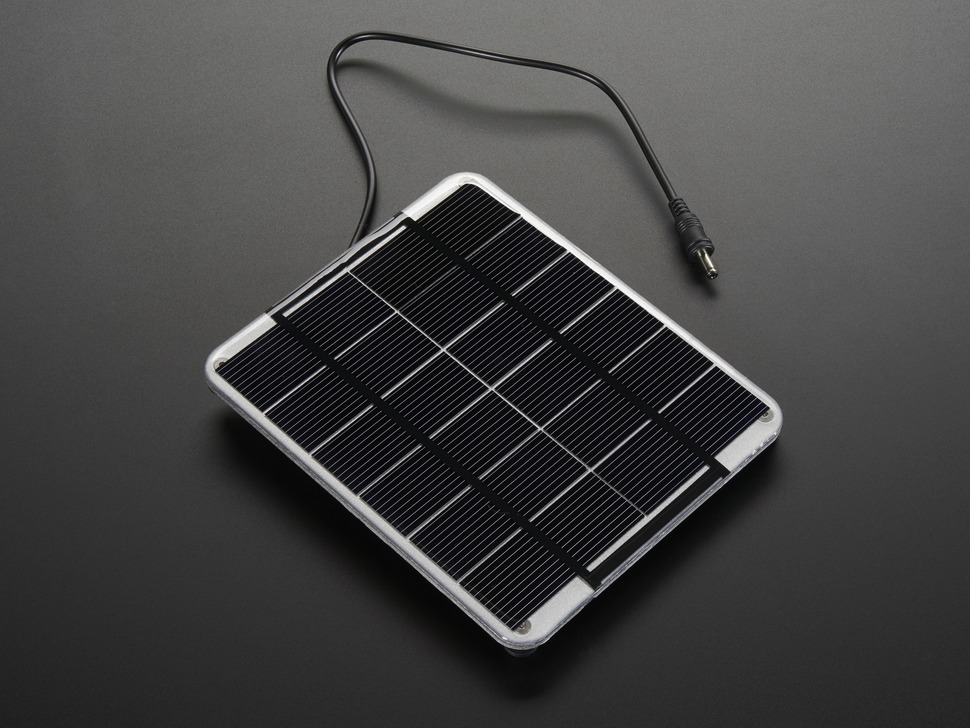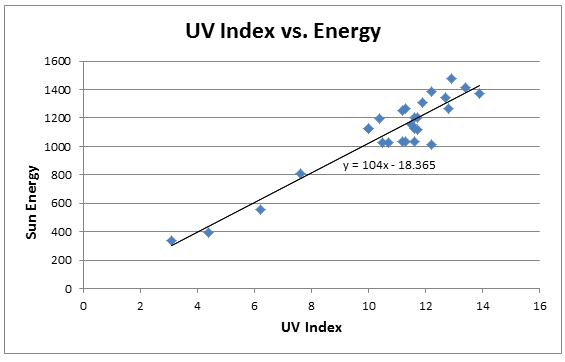If you’ve been around the Digilent Blog, you’ve probably seen a lot of robots. Remember Susan the Line-Following Pig? Well, I recently found a small, portable solar panel in the MakerSpace at Digilent and I was inspired to build a solar-powered robot. Similar to Susan, I will be using the chipKIT Pro MX4 and the Digilent Motor Robot Kit (MRK) for my solar-powered design. However, when I first came up with this idea, it was the middle of winter. That being said, sunlight was quite a bit more scarce, especially up here in Pullman, WA. I first had to ask an important question: will I have enough sun?

To answer this question I had to do some research. My first thought was that I could make a reasonable assumption of the solar energy available based on the UV Index. However, as an index, the UV Index doesn’t directly specify a certain amount of solar energy. Searching around, I found someone with a home weather station and they shared some data in a forum showing the relationship between UV Index and solar energy. I put this data in a spreadsheet and found a relationship. Based on the data, the relationship between solar energy and UV Index can be represented with this equation:
(solar energy) = 104*(UV Index) – 18.365
This equation yields the solar energy in units of Watts per square meter, and the result is reasonable because it is close to the general statement that a UV Index of 1 represents solar energy of 100W/m2.

With that information, I can determine the amount of solar energy available at any time by simply checking the weather. When I first had this idea in January, the UV Index would never have exceeded a value of 1, even at noon. Based on the relationship from the data above, a UV Index of 1 indicates 85.6W/m2. Note that my solar panel is only 4.4″x5.4″, or 0.01533m2. Multiplying the solar energy times the area of my solar panel yields only 1.31W of power. However, I measured that my robot’s motors require 1.90W. Clearly, I would not be able to get enough power on a cold January day to power my robot.
Well, now it’s June, and even this far north we get a fair amount of sun. As I’m currently writing this the UV Index is 5, indicating just over 500W/m2 of solar energy. Even on the area of my little solar panel I can get 7.7W of power. This is more than enough to power my robot. Note, my solar panel is also only rated to operate at 2W. The other 5.7W will be reflected from the panel or transferred as heat. I plan to finish putting this together, now that I have the sun for it, and I will post a blog with the finished design.


I think you need to factor in the efficiency of your solar cell too. While the sun may be putting out 500 W/m2 this would be over all frequencies; your solar cell can only capture energy within a specific freq range.
I need someone to pick out one best product from those on this list here.
In addition to Phil’s point above (monocrystaline PV cells usually have an efficiency of about 15-20%), the 2W rating on your solar module is almost certainly the output at standard test conditions (STC), which is 1000 W/m^2.
At 500 W/m^2, you’ll likely get pretty close to the rated voltage, but only about half the current that the module produces at STC. In other words, it’s probably going to deliver you 1W in practice.
Very handy, thanks!